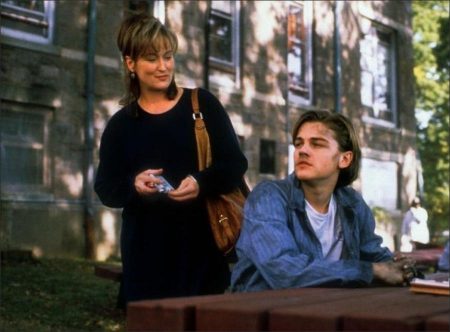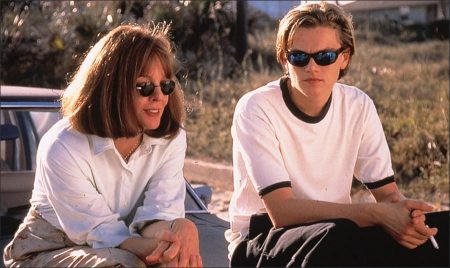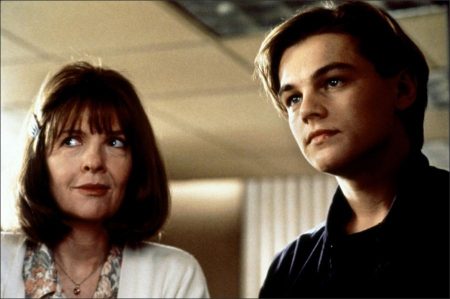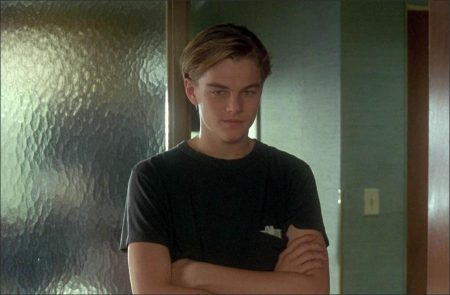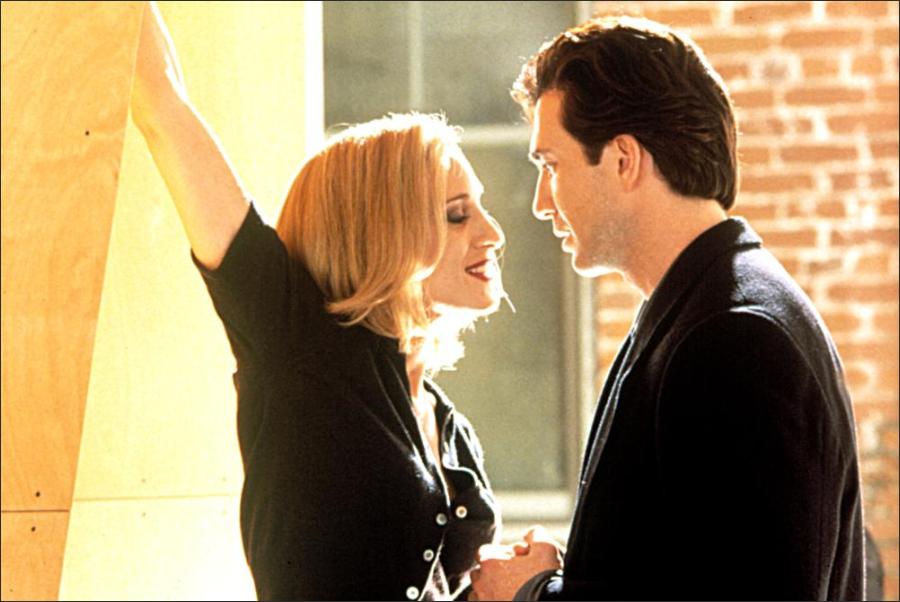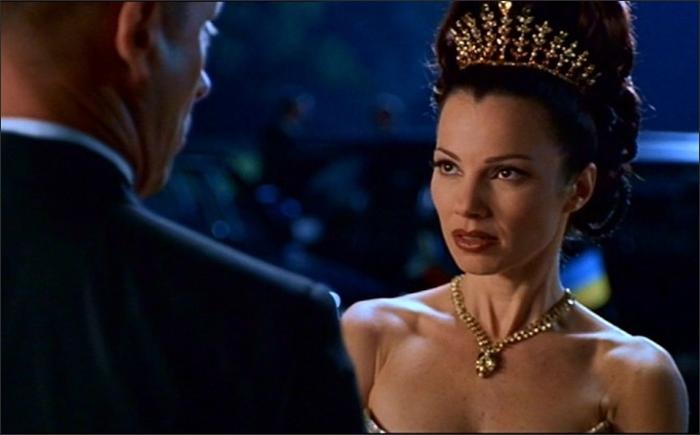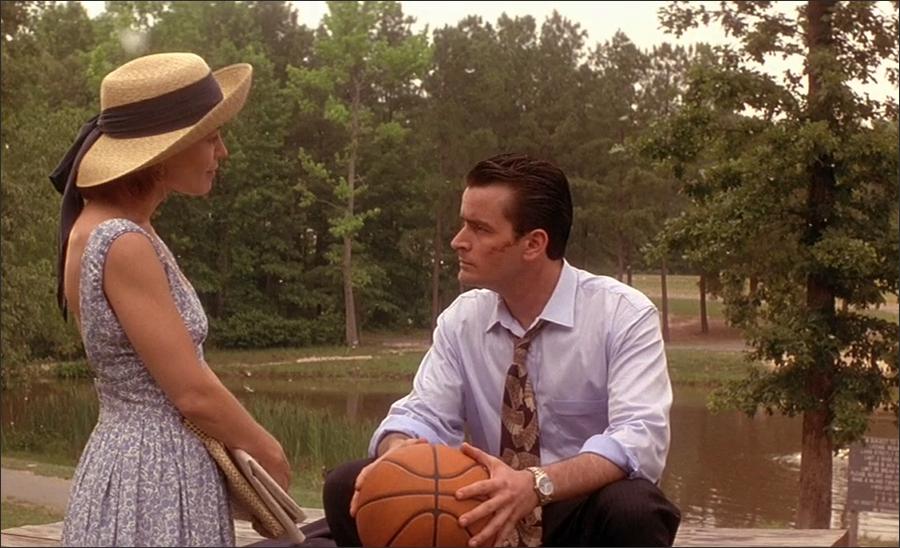Taglines: A story about the years that keep us apart… And the moments that bring us together.
Marvin’s Room movie storyline. Estranged since their father’s first stroke some 17 years earlier, Lee and Bessie lead separate lives in separate states. Lee’s son, Hank, finds himself committed to a mental institution after setting fire to his mother’s house. His younger brother, Charlie, seems unfazed by his brother’s eccentricities or his mother’s seeming disinterest. When Lee comes to the asylum to spring Hank for a week in Florida so that he can be tested as a possible bone marrow donor for Bessie, Hank is incredulous.
“I didn’t even know you had a sister,” he says. “Remember, every Christmas, when I used to say ‘Well, looks like Aunt Bessie didn’t send us a card again this year?'” “Oh yeah,” Hank says. Meanwhile, Marvin, the two women’s bedridden father, has “been dying for the past twenty years.” “He’s doing it real slow so I don’t miss anything,” Bessie tells Dr. Wally. In Bessie’s regular doctor’s absence, it has fallen to Dr. Wally to inform Bessie that she has leukemia and will die without a bone marrow transplant. This precipitates the two sisters uneasy reunion.
In Marvin’s room, Bessie cares for her father’s every need. In Lee’s eyes, the sacrifice Bessie has made is too great and realizing the old man’s welfare will fall to her if Bessie dies, Lee’s first instinct is to look for a nursing home. “In a few month’s, I’ll have my cosmotology degree,” she says. “My life is just coming together; I’m not going to give it all up, now!” As first Lee is tested and then the boys for the compatibility of their marrow with Bessie’s, the women take stock of their lives and rediscover the meaning of “family.”
Marvin’s Room is a 1997 American drama film directed by Jerry Zaks. The script was written by John Guare and based on the play of the same name by Scott McPherson, who died in 1992. It stars Meryl Streep, Leonardo DiCaprio, Diane Keaton, Robert De Niro, Hume Cronyn, Gwen Verdon, Hal Scardino and Dan Hedaya. Original music for the film was composed by Rachel Portman. Carly Simon wrote and performed the theme song “Two Little Sisters”, with Meryl Streep adding background vocals.
Film Review for Marvin’s Room
Just eight months apart in 1991, two American plays made acclaimed New York debuts in the same Off Broadway theater. One was the darkly comic story of a middle-aged woman dying of leukemia who reaches out to her estranged sister; the other, the wrenching tale of the war between a self-destructive Holocaust survivor and his three children.
The plays — “Marvin’s Room,” by Scott McPherson, and “The Substance of Fire,” by Jon Robin Baitz — were family dramas that illuminated difficult subjects with uncommon insight and humor. Each established its young author as one of the most promising playwrights of his generation. The idiosyncratic and highly theatrical works shared another characteristic: neither seemed a likely candidate for a movie adaptation.
“When I saw it, I went crazy for it,” Scott Rudin, producer of ”The Addams Family” and “The First Wives Club,” said of the stage version of Mr. McPherson’s ”Marvin’s Room.” “But when I heard that somebody had bought it, I thought, ‘This is a ridiculous idea.'”
Mr. Baitz, 35, was similarly perplexed when, just after “The Substance of Fire” opened, he met with studio executives, who had grand Hollywood designs in their heads. “They kept using words like ‘big courtroom summation,’ ” Mr. Baitz recalled. “I got dizzy, and the world started to swirl around. I walked out onto Fifth Avenue, and knew that I was not going to be a rich man any time soon.”
But if it seemed to the plays’ fans (and creators) that the works would have futures only at regional theaters, they would be proved wrong. Both movie projects eventually found financial backing. And now, remarkably, the films of ”Marvin’s Room” (produced by, among others, the initially skeptical Mr. Rudin) and “The Substance of Fire” (with a screenplay by Mr. Baitz) are opening this month ” within two weeks of each other. ”The Substance of Fire,” with Ron Rifkin, Sarah Jessica Parker, Timothy Hutton and Tony Goldwyn, opened on Friday. “Marvin’s Room,” featuring Meryl Streep, Robert De Niro, Diane Keaton and Leonardo DiCaprio, arrives in theaters on Dec. 18.
The coincidences do not end with the nearly simultaneous movie openings, five years after their auspicious stage debuts at Playwrights Horizons. Both movies are being released by Miramax Films, a company known for its interest in talented young film makers. Both also represent the cinematic directing bows for two veteran stage directors: Jerry Zaks for “Marvin’s Room” and Daniel Sullivan for “The Substance of Fire.”
But perhaps the most remarkable similarity is the shape in which the plays made it to the screen: with their messages intact. The movies are both like and unlike the plays from which they have been adapted. Both have been substantially reworked and “opened up” to include places and characters only alluded to on stage. And though the films are different in tone and scale — “The Substance of Fire” was made for $2 million while ”Marvin’s Room” cost $15 million — the voices of the films remain distinctly those of the playwrights. In an age when even the most retrograde adventure movie can be written by committee, this is no small feat.
THERE IS, OF COURSE, A long tradition of turning plays into films. Rarely, however, do film companies go for such quirky, daring works. With its all-star cast, “Marvin’s Room” is the likelier candidate for mainstream audience appeal. But neither movie has anything close to what might be called a lock on commercial success. And that, in a sense, is an indication of the lengths that those involved in both projects have gone to retain the spirit of the plays.
“The whole idea of something being thoughtful, you’re condemned for just having the thought,” said Mr. Sullivan, the director of both the stage and screen versions of “The Substance of Fire.” “But I don’t know what other kind of movie to make.”
Neither film had a particularly smooth ride to the screening room. Mr. Sullivan said “The Substance of Fire” ran out of money just before the editing was to begin; Miramax executives were the white knights who rescued it, buying the movie from the producer Ron Kastner and financing post-production.
“Marvin’s Room” had its trials and traumas, too. Mr. McPherson, the play’s 33-year-old author, died of AIDS soon after completing his screen adaptation late in 1992. Mr. Zaks and the movie’s producers (who also include Jane Rosenthal and Mr. De Niro) faced the daunting task of amending and restructuring the screenplay without him.
Mr. Rudin, who also often works in the theater, said his change of heart about the film possibilities for “Marvin’s Room” occurred after he read Mr. McPherson’s screenplay. He thought the author had successfully opened up the play with scenes in a convent, on a beach and at Disney World (the theme park had indeed been mentioned in the play). Even more, Mr. Rudin loved the language.
“There is a music and a rhythm in Scott’s words that are completely his own,” he said. Another departure from the stage version was Mr. McPherson’s decision to portray Marvin and his room. The story of “Marvin’s Room” revolves around Bessie (Ms. Keaton), a single woman who, while living with and taking care of her elderly father and aunt, learns that she has leukemia. In search of a blood relative who might donate bone marrow for a potentially lifesaving transplant, she contacts her sister, Lee (Ms. Streep), to whom she has not spoken in 20 years.
In the play, the audience never saw the room of the bedridden father, Marvin, where a dying woman ministered to a dying man. The daughter’s love was suggested by lights that danced on the room’s opaque wall — reflections from the mirror Bessie uses to entertain Marvin. In the more literal movie version, Marvin (Hume Cronyn), his room and Bessie’s mirror are no longer metaphors.
Mr. Zaks and Mr. Rudin said that in Mr. McPherson’s absence, they felt they had to make other changes in the script. Perhaps the most radical was a shift in focus from Bessie to Lee. On stage, Bessie, facing mortality, was the obvious protagonist; for the movie, the director and the producers decided that Lee’s predicament, whether to come home, to take her place in the family, would make a better emotional hook.
The decision required a substantial reshooting six months after the movie, filmed on location in Florida and in studios in Queens, had been completed; the screenwriter Ron Nyswaner, whose credits include “Philadelphia,” was recruited to help with the ending, which was also changed to focus more on Lee.
“A large part of making the transition from play to movie happened in the editing,” said Mr. Zaks, who saw but did not direct the stage version. What he tried to avoid, he added, was losing sight of Mr. McPherson’s story: “Any time we wandered too far away from the story or structure of the play, we were barking up the wrong tree.”
For “The Substance of Fire,” Mr. Sullivan had an advantage over Mr. Zaks. Mr. Sullivan and his screenwriter, Mr. Baitz, had worked together on several plays. Last winter, he directed Mr. Baitz’s “A Fair Country” for Lincoln Center Theater.
Mr. Baitz, though leery of Hollywood, wanted to see his play become a movie and one day two years ago asked Mr. Sullivan if he would help him write the screenplay and then direct it. (Mr. Baitz is also one of the movie’s producers.)
“The Substance of Fire” required even more restructuring than “Marvin’s Room.” As a play it consists of two acts, each a veritable play unto itself. The first act takes place in the board room of the publishing house that Isaac Geldhart (played by Mr. Rifkin in both versions) is running into the ground over the objections of his three children. They cannot comprehend their father’s desire to publish an uncommercial multivolume study of macabre medical experiments conducted by Nazi doctors. The second act chronicles Isaac’s psychological deterioration after he loses control of the business.
The play examines such profound questions as the nature of forgiveness. Mr. Baitz said a movie version could explore abstract issues, but he knew that the work would have to be more kinetic. “We were very much in sync about not holding on to anything,” he said. “Dan was very eager not to do a play in aspic.”
Like that of “Marvin’s Room,” the movie version of “The Substance of Fire” broadens the focus. While the play was preoccupied with Isaac, the film provides about 40 minutes of exposition that fills out the lives of the three grown children and gives texture to the battle with their father.
Sarah Jessica Parker (Isaac’s daughter on both stage and screen) said that while she sometimes found it difficult to “let the play go,” she was surprised at how much of what she had imagined about the character on stage could be expressed in the movie. “All the things that I figured out for her myself were there in the screenplay,” she said.
For Mr. Baitz, taking a beloved play and remaking it as a film taught him about both kinds of writing. “The play for me was so much about intermission, the terrible canyon between the two acts,” he said. “And the film looks for what was in that canyon.”
Marvin’s Room (1997)
Directed by: Jerry Zaks
Starring: Meryl Streep, Leonardo DiCaprio, Diane Keaton, Robert De Niro, Hume Cronyn, Gwen Verdon, Hal Scardino, Cynthia Nixon, Kelly Ripa, Margo Martindale
Screenplay by: John Guare
Production Design by: David Gropman
Cinematography by: Piotr Sobocinski
Film Editing by: Jim Clark
Costume Design by: Julie Weiss
Set Decoration by: Tracey A. Doyle
Art Direction by: Peter Rogness
Music by: Rachel Portman
MPAA Rating: PG-13 for thematic elements and brief language.
Distributed by: Miramax Films
Release Date: February 22, 1997
Hits: 268
